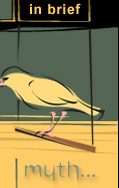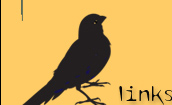BREEDING FOR PROFIT? FORGET IT!
Breeding season. It happens every year. But don’t make the mistake of thinking it’s a great way to make money by selling the youngsters, because it doesn’t work like that. And allowing the hens to continue to lay all season practically guarantees the loss of the hen.
CONDITIONING THE BIRDS
If your birds are going to breed successfully, they will need to be in top condition. This means you need to consider their nutritional requirements well in advance of the breeding season. If a hen is lacking in essential nutrients, such as calcium, she could become egg bound – a condition that is often fatal.
NESTING MATERIALS
You can obtain wicker nests from a pet shop, although there are many varieties of nests. Place nest high in the cage as it makes the hen feel more secure. Provide sisal or coconut fibers, and when the nest is half built, offer feathers and lint. The hens love to line the nest with this, as is softens it and creates a warm environment. Nights can be cold early in the breeding season. The materials can all be purchased from a pet shop.
MALE COMPETITION
Early in the breeding season the males can get quite aggressive and fight. This is natural but sometimes you may need to separate breeding pairs. The hens can sometimes get injured accidentally during this behaviour. If you have several males the aviary should be large enough to accommodate them and enable them to establish their own territory.
EGGS
Shortly after the lining of the nest, and up to 10 days after the initial mating, the hen will begin to lay. She usually lays one egg every morning until there are 3-6 eggs. While she’s laying she sings softly and prettily. Some breeders remove the eggs each day, replacing them with fake eggs, then return all eggs to the nest once the hen has finished laying, so that the chicks hatch at the same time. However, sometimes the later eggs contain more testosterone and the chicks that hatch last and are therefore smaller than the others, end up being more aggressive and able to compete well for food. The eggs take 13-16 days to hatch.
THE FLEDGLINGS
The male feeds both the female and the chicks. By around the 16th day, the fledglings are ready to leave the nest. At this time they are often timid and fluffed up for several days. The male continues to feed them and the hen usually begins another nest. She will not use the existing one again as it is soiled. Sometimes a hen will toss the eggs out of another’s nest and take it over. To avoid this change the nest immediately after the young have left it.
At 6 weeks (and sometimes up to 10 or 12 weeks), the chicks undergo a ‘juvenile molt’ and lose their smaller feathers. Feed them food such as corn and carrot at this time to enhance their colour.
FOOD
Make sure there is plenty of soft food for the chicks. Boil an egg for 10 minutes and put it through a strainer (twice). Mix it with a little water. Add crushed ‘milk arrowroot’ biscuits. Don’t feed greens when the chicks are young as these can block the crop. Give plenty of fruit, such as grapes, apple, and watermelon. Change the soft food every hour as it spoils and this can lead to the loss of the chicks through ‘sour crop’
If you have to handfeed the chicks, be extremely careful not to burn the crop, as this will kill them. Read and learn all you can about handfeeding first.
Ensure there are plenty of soft foods available for the chicks for a few weeks, as their beaks are too soft to crack seeds at this time.
PREVENTING FURTHER BREEDING
Remove all nesting materials to prevent more broods. Sometimes the hen will start pulling feathers from the offspring to use as nesting material. If this is the case she will need to be separated from them – since the male does most of the feeding after they leave the nest this shouldn’t be a problem for the chicks.
|





